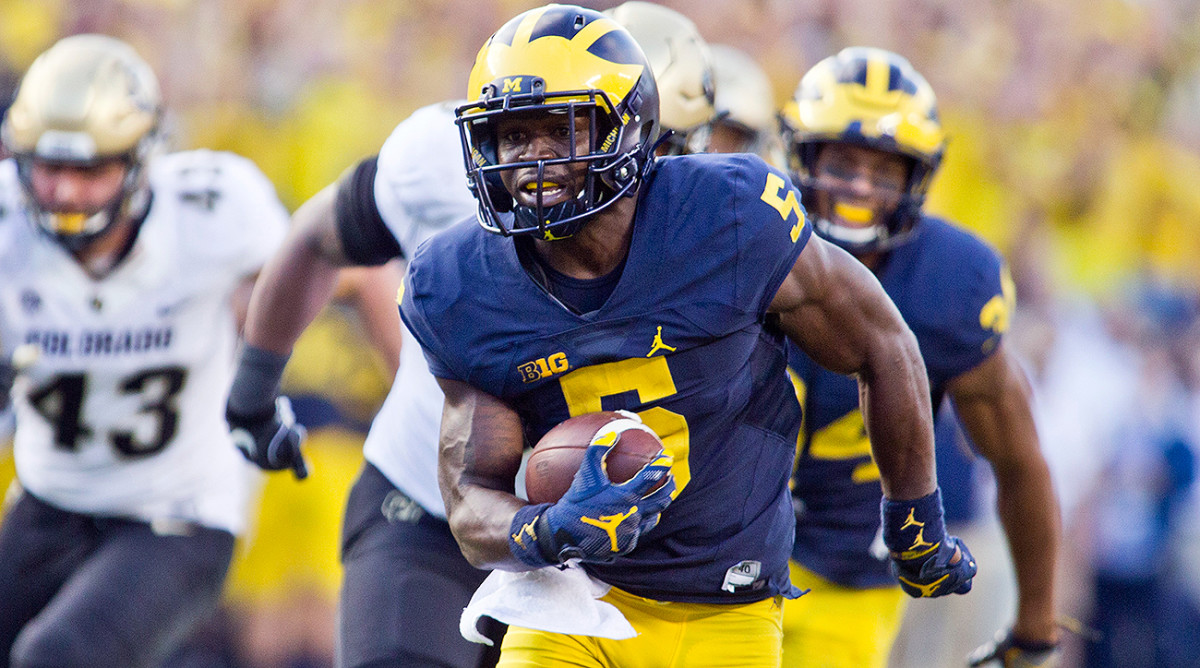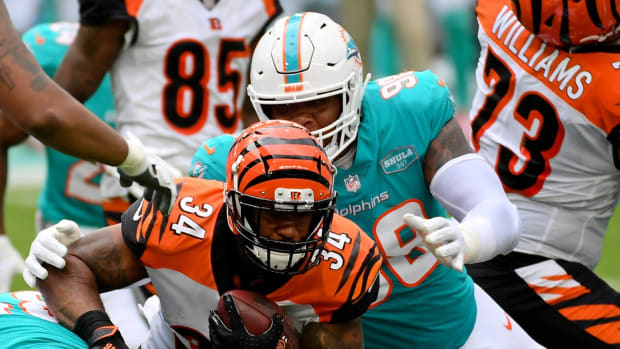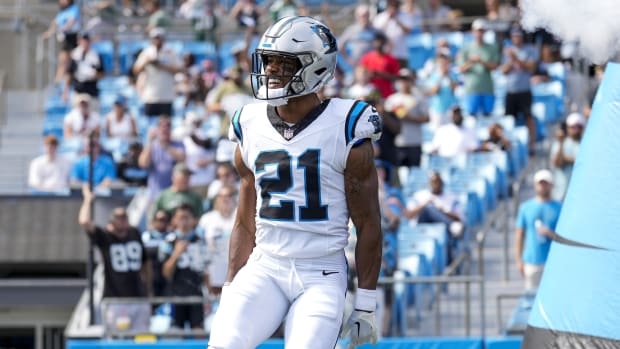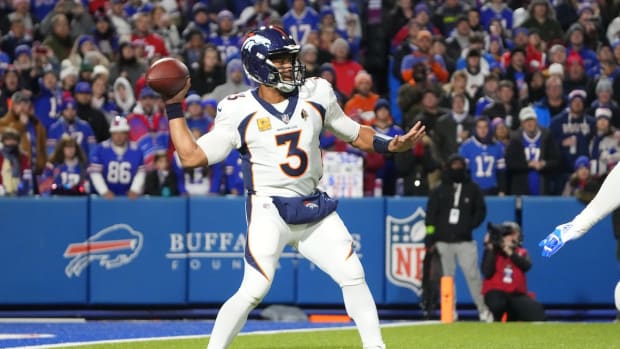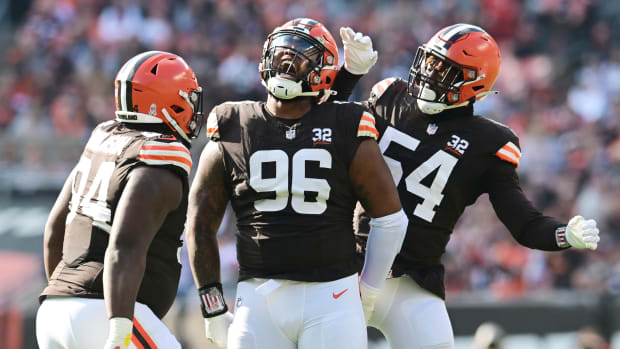2017 NFL draft prospect countdown, No. 22: Jabrill Peppers, S, Michigan
What you need to know: The Big Ten’s Defensive Player of the Year and a Heisman finalist (albeit a bit of a surprise one), Peppers did a little bit of everything for the Wolverines last season. The list included 27 rushing attempts for 167 yards and two TDs, plus 21 punt returns (310 yards and a TD, with a second one called back by penalty) and 10 kickoff returns (260 yards)—that’s all on top of the 66 tackles, 13 tackles for loss and 3.0 sacks he recorded as a linebacker. He played safety during the 2015 season, knocking away 10 passes to go with 45 tackles. The start of Peppers’s career was stunted by injury—he took a medical redshirt in 2014 after playing just three games—and it ended with him missing the Orange Bowl due to a hamstring pull.
Strengths: Michigan defensive coordinator Don Brown used to talk about the flexibility that Peppers brought to the field and to Brown’s defense. Because of how many different alignments Peppers could handle, Brown did not need to lean as heavily on sub packages. Peppers could be anything: linebacker in base, slot corner against an extra receiver, safety, pass rusher ... whatever a play required.
Peppers (5' 11", 213 pounds) could handle those varying responsibilities thanks mainly to his exceptional athleticism. At the combine, he ran a 4.46-second 40-yard dash, with a 35.5-inch vertical and a 128-inch broad jump.
The NFL has seen an influx of players with similar pros and cons in recent years—athletic freaks without a clear positional fit.
“I definitely think the trend will continue,” Peppers said. “I definitely think there are a lot more guys, it’s just about their coaching staff kind of letting them do things. But one thing I will recommend, just make sure they stay on their technique. Don’t rely on your athleticism a lot. I think that was one of my biggest flaws. But I’m cleaning that up and it’s all coming together for me.”
Peppers has the speed to get sideline to sideline or turn and run, but he is most explosive as a defender when he can click and close downhill. He can read plays well behind the line, then explode through a gap to finish tackles. It’s that skill that also makes him a dangerous threat as a blitzer—when he has a clean path to his target, there may not be a defender in this draft who covers ground faster.
The mix-and-match background means that Peppers can be matched up with receivers, tight ends or backs. He is not a standout coverage defender, but the experience is there.
He’ll be a fun piece for offensive and special-teams coaches to have, too. Peppers was a dazzling punt returner for the Wolverines, and he also saw carries while running the wildcat.
Best SI photos of Jabrill Peppers
Weaknesses: Can he defend the pass well enough to be an NFL safety? Is he physical enough to survive as a linebacker, or even as a full-time strong safety, pulled down toward the line of scrimmage?
Those are the main questions that must be asked of Peppers, because his 2016 Michigan experience really did him few favors when it comes to projecting his NFL future. Peppers himself has said he’s a safety rather than, say, a Deone Bucannon-type linebacker convert. The ex-Wolverine does not have the size or strength to thrive as an off-ball LB.
Of course, the problem with assuming he is a safety is that he didn’t play there last season. He also did not produce many game-changing moments when he was there in 2015. The criticism of his low career interception total (one) is a bit misleading because of his ’16 role—linebackers aren’t getting many shots at INTs—but he didn’t turn around any errant passes from the secondary the year prior.
There is no perfect NFL player comparison for Peppers’s pros and cons. He is not as adept in coverage as a player like Tyrann Mathieu but also not enough of a physical presence to be matched up to a linebacker. The name we’ll settle on hints at the role Peppers can play at the next level. Malcolm Jenkins was more of a true cornerback upon his arrival in the NFL, but he has transitioned to a safety/slot coverage role and excelled.
NFL player comparison: Malcolm Jenkins
































